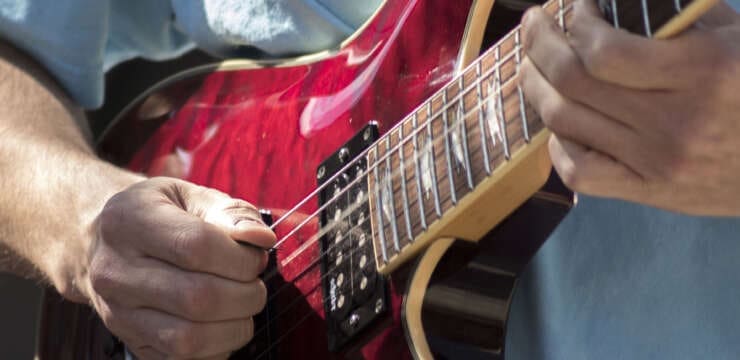
Table of Contents
Motor Vehicle Accident Recovery: The Role of Massage Therapy and Chiropractic Care

Motor vehicle accidents (MVAs) can cause a range of physical and emotional injuries that disrupt daily life. From spinal misalignments to muscle strains and emotional distress, the impact of a crash can be long-lasting if not properly addressed. Fortunately, treatments such as massage therapy and chiropractic care, particularly when provided by experts like Dr. Alexander Jimenez, DC, APRN, FNP-BC, offer effective recovery solutions. This article explores the types of injuries caused by MVAs, how massage therapy aids in healing both physical and emotional trauma, and how Dr. Jimenez’s integrative approach enhances recovery through advanced diagnostics and holistic care.
Injuries from Motor Vehicle Accidents
MVAs are a leading cause of injuries in the United States, with over 2 million injuries and 32,000 deaths annually. The spine, muscles, and nerves are especially vulnerable due to the intense forces involved in a crash. These injuries can range from mild to severe, affecting mobility, causing pain, and leading to long-term complications if untreated.
Spinal Injuries
Spinal injuries are among the most common outcomes of MVAs, accounting for 38% of spinal cord injuries (SCIs) in the U.S. between 2010 and 2013. These injuries often occur in the cervical (neck) or thoracic (mid-back) regions. Common spinal injuries include:
- Whiplash: A rapid back-and-forth motion of the neck, often from rear-end collisions, causing ligament sprains, muscle strains, or disc injuries. Symptoms include neck pain, stiffness, and headaches.
- Herniated Discs: The force of a crash can compress spinal discs, causing them to bulge or rupture, which can lead to pain or nerve irritation.
- Spinal Cord Injuries: Severe impacts can damage the spinal cord, resulting in partial or complete loss of sensation and movement below the injury site, such as paraplegia or tetraplegia.
Spinal injuries can cause chronic pain and limit mobility, making early intervention critical to prevent long-term disability.
Musculoskeletal Injuries
Musculoskeletal injuries affect muscles, ligaments, tendons, and bones. These injuries are common due to the body’s absorption of crash forces:
- Sprains and Strains: Ligaments (sprains) and muscles or tendons (strains) can stretch or tear, especially in the neck, back, or shoulders.
- Fractures: Bones, such as ribs, clavicles, or vertebrae, may break due to impact with the steering wheel, dashboard, or seatbelt.
- Soft Tissue Damage: Bruising or tearing of muscles and connective tissues can cause pain and swelling, limiting movement.
Untreated musculoskeletal injuries can lead to chronic pain or reduced function, emphasizing the need for proper care.
Nerve Injuries
Nerve injuries often result from compression or trauma during an MVA:
- Neuropraxia: A temporary nerve injury causing numbness, tingling, or weakness.
- Radiculopathy: Compression of spinal nerve roots, leading to pain, numbness, or weakness in the arms or legs.
- Peripheral Neuropathy: Damage to peripheral nerves, causing symptoms like burning or tingling in the extremities.
Nerve injuries can complicate recovery by affecting sensation and movement, requiring specialized treatment to restore function.
Emotional Distress
MVAs can also cause emotional trauma, such as post-traumatic stress disorder (PTSD) or anxiety. Symptoms include intrusive thoughts, avoidance of driving, or heightened stress responses. Emotional distress can worsen physical pain by increasing muscle tension and stress hormones, making holistic treatment essential.
References
Centers for Disease Control and Prevention. (2013). Motor vehicle crash injuries. www.cdc.gov/motorvehiclesafety/index.html National Spinal Cord Injury Statistical Center. (2013). Spinal cord injury facts and figures. www.nscisc.uab.edu/ Jimenez, A. (2025). Motor vehicle accident recovery and integrative care. dralexjimenez.com/ American Psychiatric Association. (2000). Diagnostic and statistical manual of mental disorders (4th ed.).
Benefits of Massage Therapy for MVA Recovery
Massage therapy is a powerful tool for recovering from MVA injuries. It addresses both physical and emotional trauma by reducing pain, improving circulation, and promoting relaxation. Different types of massage therapy offer unique benefits tailored to specific injuries and needs.
Types of Massage Therapy
Several massage techniques are effective for MVA recovery, each targeting different aspects of physical and emotional healing:
- Swedish Massage: This technique uses long, gentle strokes to promote relaxation and improve blood flow. It’s ideal for reducing muscle tension and easing emotional stress after an accident.
- Deep Tissue Massage: Focused on deeper muscle layers, this method targets chronic pain and scar tissue. It’s effective for treating sprains, strains, and whiplash, but should be approached cautiously to avoid discomfort.
- Trigger Point Therapy: This targets specific “knots” or tight spots in muscles that cause referred pain. By applying pressure to these points, therapists can help relieve pain associated with whiplash or soft tissue injuries.
- Myofascial Release: This technique gently stretches the fascia (connective tissue) to release restrictions, thereby improving mobility and reducing pain associated with muscle strains or scar tissue.
- Neuromuscular Therapy: Focused on realigning muscles and nerves, this method helps restore function in cases of nerve compression or muscle imbalances caused by MVAs.
Each technique is selected based on the patient’s injuries and recovery goals, often in conjunction with other therapies, such as chiropractic care.
Physical Benefits of Massage Therapy
Massage therapy offers multiple physical benefits for MVA recovery:
- Pain Relief: Massage helps reduce muscle tension and inflammation, thereby alleviating pain associated with sprains, strains, and whiplash. A 2015 study found that massage is effective for managing neck pain, a common MVA injury.
- Improved Circulation: By increasing blood flow, massage delivers oxygen and nutrients to damaged tissues, speeding up healing and reducing swelling.
- Restored Range of Motion: Techniques like myofascial release and deep tissue massage break down scar tissue and improve flexibility, helping patients regain mobility.
- Reduced Muscle Tension: Massage relaxes tight muscles, preventing compensatory patterns that can lead to further injury.
These benefits help patients recover more quickly and reduce the risk of developing chronic pain.
Emotional Benefits of Massage Therapy
Massage therapy also supports emotional recovery by addressing stress and trauma:
- Stress Reduction: Massage helps lower cortisol levels and boost endorphins, promoting relaxation and reducing anxiety. This is especially helpful for patients with PTSD or emotional distress after an MVA.
- Improved Mood: The calming effects of massage can alleviate symptoms of depression and improve overall well-being.
- Enhanced Body Awareness: Techniques like neuromuscular therapy help patients reconnect with their bodies, reducing feelings of detachment common in trauma survivors.
By addressing both physical and emotional needs, massage therapy supports a holistic recovery process.
References
Crane, J. D., et al. (2015). Massage therapy for neck pain: A systematic review. Pain Medicine, 16(4), 664-672. pubmed.ncbi.nlm.nih.gov/26707074/ Biotone. (n.d.). The benefits of massage after a car accident. biotone.com/blogs/intouch/the-benefits-of-massage-after-a-car-accident Boulder Sports Clinic. (n.d.). The benefits of massage for PTSD and trauma healing. www.bouldersportsclinic.com/blog/the-benefits-of-massage-for-ptsd-and-trauma-healing-body-and-mind MVAMVP. (n.d.). Discover the benefits of massage therapy after a car accident. mvamvp.com/discover-the-benefits-of-massage-therapy-after-a-car-accident/
Dr. Alexander Jimenez’s Integrative Approach to MVA Recovery
Dr. Alexander Jimenez, a board-certified chiropractor and nurse practitioner in El Paso, Texas, is a leading expert in treating MVA-related injuries. His dual licensure and integrative approach combine chiropractic care, functional medicine, and advanced diagnostics to address the root causes of injuries and support comprehensive recovery.
Clinical Correlation and Dual Diagnosis
Dr. Jimenez’s approach involves correlating patient symptoms with objective findings to create personalized treatment plans. He uses a dual-diagnosis method, combining chiropractic assessments with medical evaluations to identify both musculoskeletal and systemic issues. For example, a patient with neck pain may have both a cervical misalignment and inflammation-related nerve irritation. By addressing both, Dr. Jimenez ensures a thorough recovery.
Diagnostic Assessments and Advanced Imaging
Dr. Jimenez employs advanced diagnostic tools to detect injuries that may not be immediately apparent:
- X-rays and MRIs: These imaging tests help identify spinal misalignments, disc herniations, and soft tissue damage.
- Electromyography (EMG): This test assesses nerve function, detecting issues such as radiculopathy or neuropathy.
- Functional Movement Screens: These evaluate mobility and stability to guide rehabilitation.
These tools enable precise diagnoses, which are crucial for effective treatment and accurate legal documentation in personal injury cases.
Chiropractic and Integrative Medicine
Dr. Jimenez’s chiropractic care focuses on spinal adjustments to correct misalignments, reduce nerve compression, and restore mobility. He complements this with integrative medicine, including:
- Nutritional Counseling: Anti-inflammatory diets reduce swelling and support tissue repair.
- Physical Therapy: Targeted exercises improve strength and flexibility, preventing long-term complications.
- Acupuncture: This stimulates healing and reduces pain, complementing massage and chiropractic care.
This holistic approach addresses the root causes of injuries, promoting overall health and preventing chronic issues.
Legal Support in Personal Injury Cases
Dr. Jimenez’s dual licensure allows him to provide detailed medical documentation for personal injury claims. His reports include:
- Injury Descriptions: Precise records of musculoskeletal and nerve injuries, supported by imaging.
- Treatment Plans: Outlines of chiropractic, massage, and rehabilitation strategies.
- Progress Reports: Regular updates to track recovery and support legal claims.
This documentation helps patients secure fair compensation for medical expenses and lost wages.
References
Jimenez, A. (2025). Injury medical & chiropractic clinic. dralexjimenez.com/ El Paso Back Clinic. (2025). Spinal alignment pain relief for motor vehicle injuries. elpasobackclinic.com/ Personal Injury Doctor Group. (2017). Motor vehicle accident recovery and integrative care. personalinjurydoctorgroup.com/
Combining Massage Therapy and Chiropractic Care
Massage therapy and chiropractic care work synergistically to enhance MVA recovery. Chiropractic adjustments realign the spine, creating an optimal environment for massage to relieve muscle tension and improve circulation. For example, a patient with whiplash may receive spinal adjustments to correct cervical misalignments, followed by deep tissue massage to release muscle tightness. This combination accelerates healing and reduces pain more effectively than either treatment alone.
Dr. Jimenez often incorporates massage therapy into his treatment plans, tailoring techniques to meet the patient’s specific needs. For instance, a patient with lower back pain may receive trigger point therapy to address muscle knots, followed by chiropractic adjustments to stabilize the lumbar spine. This integrative approach ensures that both symptoms and underlying causes are addressed.
References
MVAMVP. (n.d.). How massage therapy helps with motor vehicle accident injuries. mvamvp.com/how-massage-therapy-helps-with-motor-vehicle-accident-injuries/ Denver Chiropractic. (n.d.). Can massage therapy help treat car accident injuries? denver-chiropractic.com/can-massage-therapy-help-treat-car-accident-injuries/
Long-Term Benefits of Treatment
The combination of massage therapy and chiropractic care offers long-term benefits for MVA survivors:
- Prevention of Chronic Pain: Early intervention can prevent minor injuries from developing into chronic conditions.
- Improved Mobility: Restoring range of motion enables patients to resume their daily activities.
- Emotional Well-Being: Reducing stress and anxiety improves quality of life and supports physical healing.
- Legal Support: Comprehensive documentation strengthens personal injury claims, ensuring fair compensation.
By addressing both physical and emotional aspects of recovery, these treatments empower patients to reclaim their health and live pain-free.
References
Galiny Accident Recovery. (n.d.). The healing power of massage therapy after a car accident. galiny.com/the-healing-power-of-massage-therapy-after-a-car-accident/ Physioflow. (n.d.). Massage therapy for whiplash recovery. www.physioflow.ca/massage-therapy-for-whiplash-recovery/
Conclusion
Motor vehicle accidents can cause significant spinal, musculoskeletal, and nerve injuries, as well as emotional distress. Massage therapy, employing techniques such as Swedish, deep tissue, and trigger point therapy, provides physical and emotional benefits by reducing pain, enhancing mobility, and alleviating stress. Dr. Alexander Jimenez’s integrative approach, combining chiropractic care, advanced diagnostics, and holistic therapies, provides a comprehensive solution for MVA recovery. His dual licensure ensures precise diagnoses and robust legal documentation, helping patients achieve full recovery and fair compensation. Early intervention and a tailored treatment plan are key to preventing long-term complications and restoring health.
References
American Psychiatric Association. (2000). Diagnostic and statistical manual of mental disorders (4th ed.).
Biotone. (n.d.). The benefits of massage after a car accident. biotone.com/blogs/intouch/the-benefits-of-massage-after-a-car-accident
Boulder Sports Clinic. (n.d.). The benefits of massage for PTSD and trauma healing. www.bouldersportsclinic.com/blog/the-benefits-of-massage-for-ptsd-and-trauma-healing-body-and-mind
Centers for Disease Control and Prevention. (2013). Motor vehicle crash injuries. www.cdc.gov/motorvehiclesafety/index.html
Crane, J. D., Ogborn, D. I., Cupido, C., Melov, S., Hubbard, A., Bourgeois, J. M., & Tarnopolsky, M. A. (2015). Massage therapy for neck pain: A systematic review. Pain Medicine, 16(4), 664-672. pubmed.ncbi.nlm.nih.gov/26707074/
Denver Chiropractic. (n.d.). Can massage therapy help treat car accident injuries? denver-chiropractic.com/can-massage-therapy-help-treat-car-accident-injuries/
El Paso Back Clinic. (2025). Spinal alignment pain relief for motor vehicle injuries. elpasobackclinic.com/
Galiny Accident Recovery. (n.d.). The healing power of massage therapy after a car accident. galiny.com/the-healing-power-of-massage-therapy-after-a-car-accident/
Jimenez, A. (2025). Injury medical & chiropractic clinic. dralexjimenez.com/
MVAMVP. (n.d.). Discover the benefits of massage therapy after a car accident. mvamvp.com/discover-the-benefits-of-massage-therapy-after-a-car-accident/
MVAMVP. (n.d.). How massage therapy helps with motor vehicle accident injuries. mvamvp.com/how-massage-therapy-helps-with-motor-vehicle-accident-injuries/
National Spinal Cord Injury Statistical Center. (2013). Spinal cord injury facts and figures. www.nscisc.uab.edu/
Personal Injury Doctor Group. (2017). Motor vehicle accident recovery and integrative care. personalinjurydoctorgroup.com/
Physioflow. (n.d.). Massage therapy for whiplash recovery. www.physioflow.ca/massage-therapy-for-whiplash-recovery/
Disclaimers
Professional Scope of Practice *
The information herein on "Post-Accident Massage Benefits After a Vehicle Crash" is not intended to replace a one-on-one relationship with a qualified health care professional or licensed physician and is not medical advice. We encourage you to make healthcare decisions based on your research and partnership with a qualified healthcare professional.
Blog Information & Scope Discussions
Welcome to El Paso's wellness blog, where Dr. Alex Jimenez, DC, FNP-C, a board-certified Family Practice Nurse Practitioner (FNP-C) and Chiropractor (DC), presents insights on how our team is dedicated to holistic healing and personalized care. Our practice aligns with evidence-based treatment protocols inspired by integrative medicine principles, similar to those found on dralexjimenez.com, focusing on restoring health naturally for patients of all ages.
Our areas of chiropractic practice include Wellness & Nutrition, Chronic Pain, Personal Injury, Auto Accident Care, Work Injuries, Back Injury, Low Back Pain, Neck Pain, Migraine Headaches, Sports Injuries, Severe Sciatica, Scoliosis, Complex Herniated Discs, Fibromyalgia, Chronic Pain, Complex Injuries, Stress Management, Functional Medicine Treatments, and in-scope care protocols.
Our information scope is limited to chiropractic, musculoskeletal, physical medicine, wellness, contributing etiological viscerosomatic disturbances within clinical presentations, associated somato-visceral reflex clinical dynamics, subluxation complexes, sensitive health issues, and functional medicine articles, topics, and discussions.
We provide and present clinical collaboration with specialists from various disciplines. Each specialist is governed by their professional scope of practice and their jurisdiction of licensure. We use functional health & wellness protocols to treat and support care for the injuries or disorders of the musculoskeletal system.
Our videos, posts, topics, subjects, and insights cover clinical matters, issues, and topics that relate to and directly or indirectly support our clinical scope of practice.*
Our office has reasonably attempted to provide supportive citations and has identified the relevant research studies or studies supporting our posts. We provide copies of supporting research studies available to regulatory boards and the public upon request.
We understand that we cover matters that require an additional explanation of how they may assist in a particular care plan or treatment protocol; therefore, to discuss the subject matter above further, please feel free to ask Dr. Alex Jimenez, DC, APRN, FNP-BC, or contact us at 915-850-0900.
We are here to help you and your family.
Blessings
Dr. Alex Jimenez DC, MSACP, APRN, FNP-BC*, CCST, IFMCP, CFMP, ATN
email: coach@elpasofunctionalmedicine.com
Licensed as a Doctor of Chiropractic (DC) in Texas & New Mexico*
Texas DC License # TX5807
New Mexico DC License # NM-DC2182
Licensed as a Registered Nurse (RN*) in Texas & Multistate
Texas RN License # 1191402
ANCC FNP-BC: Board Certified Nurse Practitioner*
Compact Status: Multi-State License: Authorized to Practice in 40 States*
Graduate with Honors: ICHS: MSN-FNP (Family Nurse Practitioner Program)
Degree Granted. Master's in Family Practice MSN Diploma (Cum Laude)
Dr. Alex Jimenez, DC, APRN, FNP-BC*, CFMP, IFMCP, ATN, CCST
My Digital Business Card






